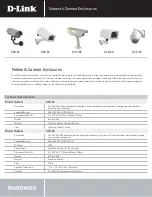
Page 17
If you are experiencing any problems after installing the QUICKCHIP for the first time, the follow-
ing section should help you find the solution. Make sure you record all jumper and CMOS settings
before you change them.
Check the QUICKCHIP packaging to see if you computer is on the Incompatibility List. Note: the
QUICKCHIP will not work in notebook computers.
Problem #1 - The QUICKCHIP will not fit.
Solution #1:
Make sure all pins are aligned properly.
Solution #2:
If there’s a ZIF handle, be sure is it all the way up in the unlocked position.
Solution #3:
Is the system board socket 168-pin? If so, you need to install the 168-pin
socket extender first.
Problem #2 - No video.
Solution #1:
Check all power cords and internal device cables.
Solution #2:
Make sure the system board is set for 5 volts.
Solution #3:
Make sure the jumpers on the system board are set to DX33 or DX25 setting.
Refer to your owner’s manual for details on these settings.
Solution #4:
Try all the dip switch settings on page 18-19 until you find one that works.
Solution #5:
Check BIOS version.You may need to upgrade. Check with your computer’s
manufacturer for information.
Problem #3 - Computer freezes during boot-up.
Solution #1:
Try all the dip switch settings on page 18-19 until you find one that works.
Solution #2:
In your CMOS set-up, set DRAM Wait States to 0, 1 or 2.
Solution #3:
In your CMOS set-up, set AT Bus Clock to 4, for 33MHz, or 3, for 25MHz.
Problem #4 - No increase in speed.
Solution #1:
Run Utilities Disk to check actual CPU speed and throughput.
Solution #2:
In your CMOS set-up, set Internal and External Cache to enabled.
Solution #3:
In your CMOS set-up, set DRAM Wait States to 0, 1 or 2.
Solution #4:
In your CMOS set-up, set AT Bus Clock to 4, for 33MHz, or 3, for 25MHz.
Problem #5 - Original 486 chip will not work.
Solution #1:
Make sure it is seated in the socket properly with Pin 1 to Pin 1.
Solution #2:
Reset all jumpers and CMOS settings to to original 486 settings.
Solution #3:
Reset CMOS according to computer manufacturers instructions.
Problem #6 - Floppy drive is not recognized.
Solution #1:
Disable the Power Save feature in the BIOS.
Solution #2:
Disable the Shadow Memory in the CMOS set-up.
Solution #3:
Disable the External Cache in the CMOS set-up.
Section
4
Technical Guide




































